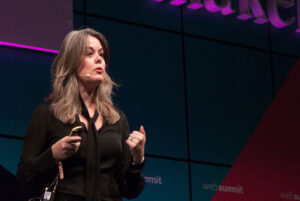
An opportunity to highlight the gender health gap
The gender gap in health care can for example be seen in the fact that women are underrepresented in clinical trials, which can lead to a lack of data in the research and development of medicines, which means possible risks to women’s health.
The women’s health care at Sahlgrenska University Hospital sees HackHERHealth as an opportunity to highlight the gender health gap. Maria Hallingström is a midwife, PhD in medicine, and project manager for the innovation work in women’s health care at the hospital. She has been involved in developing one of the challenges during HackHERHealth and will also be present during the event as a mentor and jury member. Rocio Montejo Rodriguez, a consultant in gynaecology and reproductive medicine, has also developed one of the challenges and will be present as a mentor.
 “The gender health gap is something we see many examples of,” Says Rocio Montejo Rodriguez. She mentions the report “(In)equality in Health and Care” produced by the Swedish Association of Municipalities and Regions (Sveriges kommuner och landsting – SKR).
“The gender health gap is something we see many examples of,” Says Rocio Montejo Rodriguez. She mentions the report “(In)equality in Health and Care” produced by the Swedish Association of Municipalities and Regions (Sveriges kommuner och landsting – SKR).
The report highlights gender differences in health, quality of care, and access to care based on various studies. These include longer waiting times for medical procedures and unequal access to treatments, even if the needs are similar. In Sweden, women with certain heart rhythm disorders wait an average of 15 years for proper diagnosis and treatment, compared to men who wait six years less. There are also differences in treatment for conditions such as stroke, diabetes, and osteoporosis, with women often receiving less intensive care.
According to Rocio Montejo Rodriguez, what is needed above all is more research on women’s health to gain more clinical and biological knowledge. But also more innovation and understanding of how technological solutions can be used.
“There are many technologies that can be specifically targeted to women, such as during pregnancy, postpartum, and menopause. There is also great potential for this technology to be developed and utilised.”
 Maria Hallingström recognises that there are many reasons for the gender gap in health care, not least of which are historical. She finds it regrettable that not as much has been invested in women’s health.
Maria Hallingström recognises that there are many reasons for the gender gap in health care, not least of which are historical. She finds it regrettable that not as much has been invested in women’s health.
”Furthermore, some professions are less well paid, such as female-dominated and socially important care professions, and this needs to change to achieve gender equality.”
Maria Hallingström took on the role of project manager in innovation last autumn and is studying Innovation and Technology for Certified Health Professions. There is more and more focus on innovation in women’s health care and she sees many development opportunities.
“In women’s health care, we can become better at finding and using new technology to deal with existing challenges and problems. We need to start from the needs of patients and healthcare professionals and use new products, services, or solutions to work with resources more efficiently and eliminate energy thieves. I believe, for example, that we can work more with Artificial Intelligence (AI) and Virtual Reality (VR), among other things, to support various assessment and decision-making issues, as well as in the supply of expertise and to prepare patients for various types of procedures or examinations.”
An article by Patrik Centerwall, Communications Manager at Sahlgrenska University Hospital.



